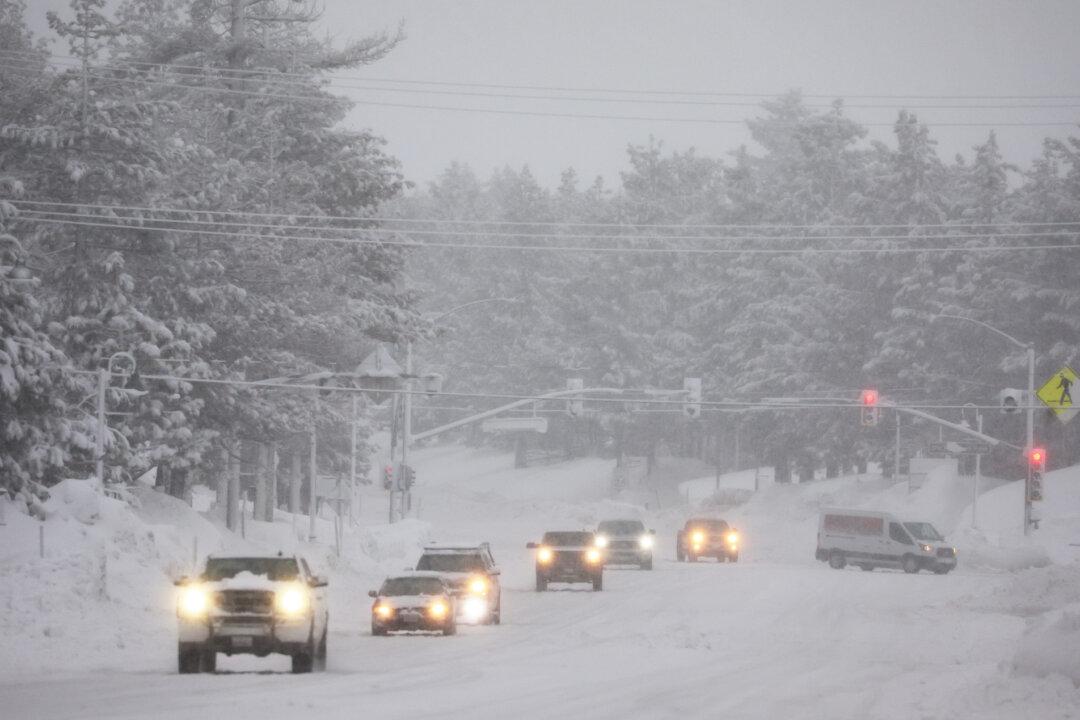The snowpack in California is at its highest level in decades, bringing drought relief to several regions as well as concerns about flooding from the upcoming snowmelt.
Electronic readings from 130 snow sensors throughout California show that the statewide snowpack’s snow water equivalent was at 61.1 inches on April 3, which is 237 percent of average for this date, according to a press release by the California Department of Water Resources (DWR). This year’s April 1 result from the statewide snow sensor network was found to be higher than any reading since the network was set up in the mid-1980s.





